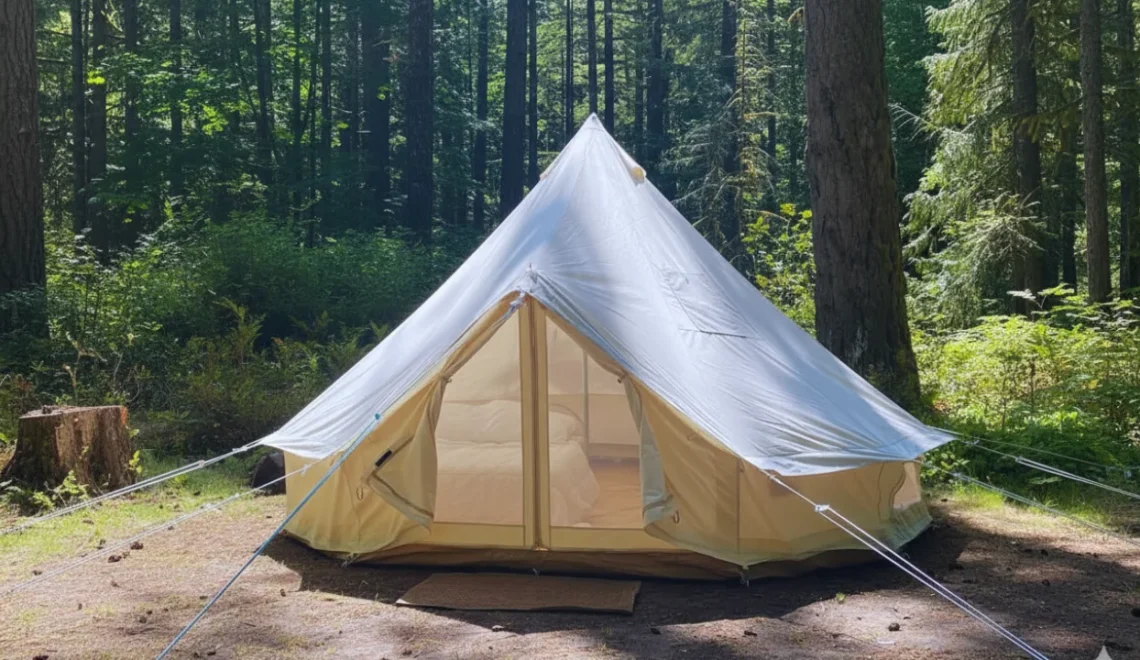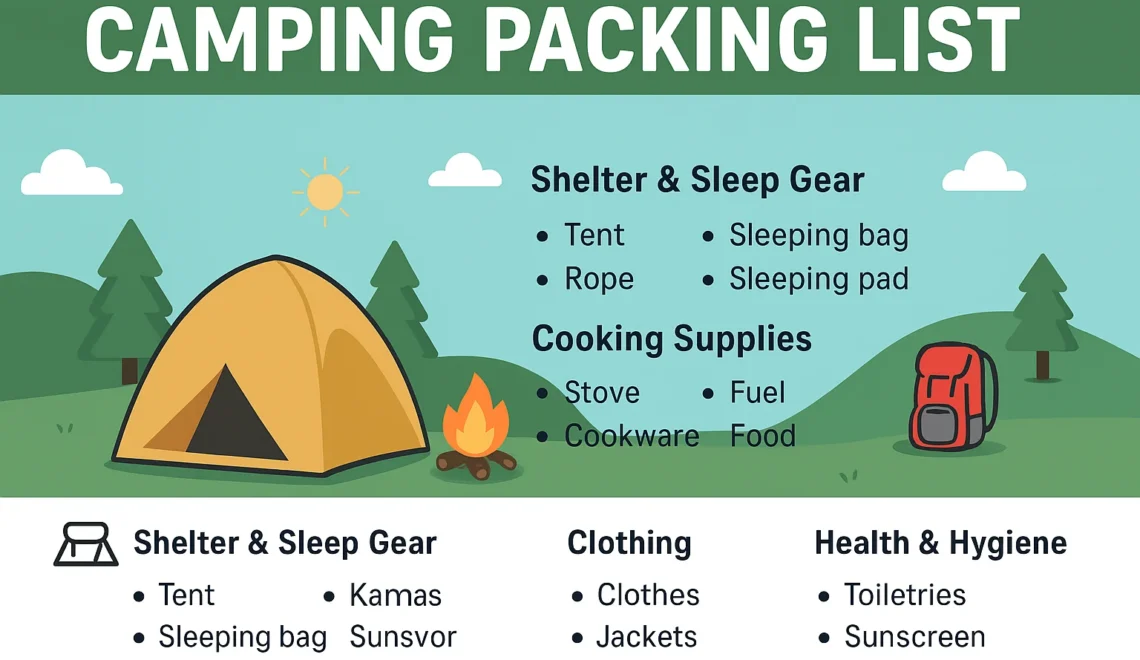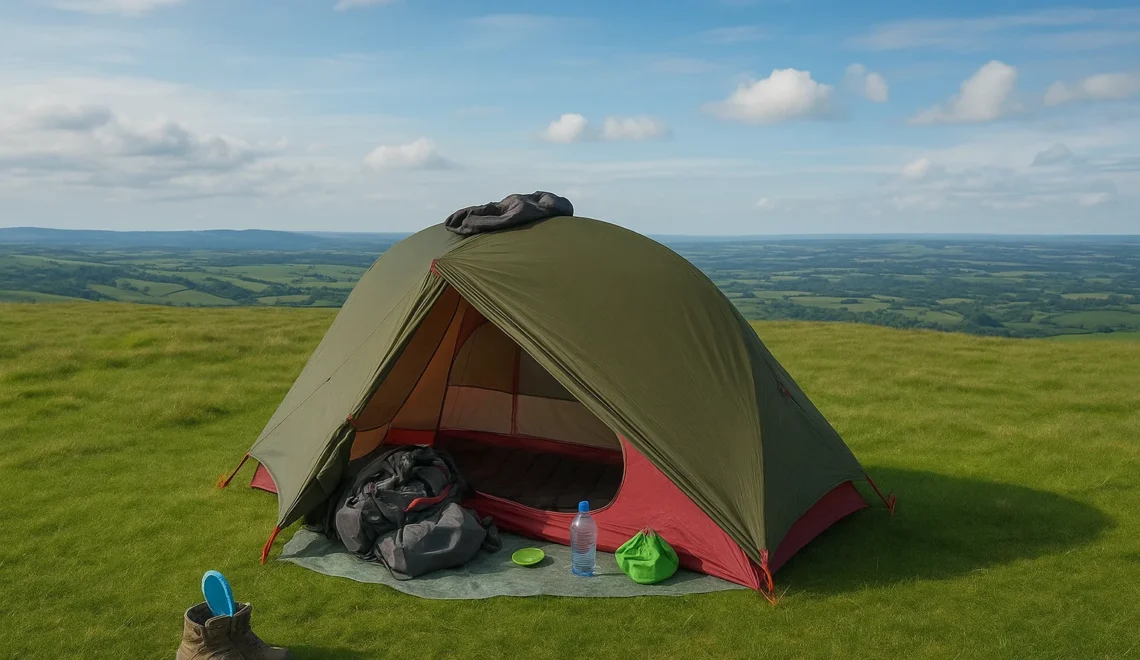
Elegant Bell Tent for Powerful Adventures
Imagine stepping into a campsite that feels more like a boutique retreat than a rugged wilderness setup. Soft lanterns glow, a wood stove crackles, and you stand under a beautifully curved canvas roof that whispers of history and adventure — that’s the charm of the bell tent.
The bell tent has become a symbol of stylish outdoor living, merging the simplicity of traditional camping with the comfort of luxury accommodation. Whether you’re into glamping, festival stays, or family adventures in nature, bell tents are redefining what it means to camp in comfort.
But what makes a bell tent so special? How did it evolve from a 19th-century military shelter into a must-have for outdoor enthusiasts worldwide? This article dives deep into everything you need to know — design, setup, benefits, care, and more — to help you choose, use, and love your bell tent for years to come.
1. What Is a Bell Tent?
A bell tent is a round, canvas shelter supported by a single central pole and secured by guy ropes. The shape resembles a bell — wide at the base and tapering toward the top — which gives it excellent stability and a spacious, airy interior.
Unlike traditional dome or tunnel tents, bell tents are made primarily from natural canvas instead of synthetic materials. This makes them breathable, durable, and capable of handling a variety of climates — from cool mountain breezes to humid forest nights.
Key Features
- Central Pole: Supports the structure and maximizes headroom.
- Canvas Fabric: Usually 100% cotton or poly-cotton blend for breathability and insulation.
- Guy Lines & Pegs: Ensure wind stability and tautness.
- Circular Base: Offers 360° usable space.
- Zippable Groundsheet: Keeps insects out and allows ventilation.
Modern bell tents often include extras like stove jacks, mesh windows, and zip-in groundsheets — making them ideal for everything from glamping resorts to off-grid living.
2. The Fascinating History of the Bell Tent
The bell tent traces its origins back to the mid-19th century. It was invented by Henry Hopkins Sibley, an American military officer who designed the tent after studying Native American tipis. His version, known as the Sibley tent, became widely used by the U.S. Army during the Civil War (1861–1865).
Over time, the design evolved:
- 19th Century: Used in military campaigns due to its ease of setup and portability.
- Early 20th Century: Adopted by scouts and explorers.
- Modern Era: Reimagined for glamping and eco-tourism.
Today’s bell tents blend historic craftsmanship with modern innovations — waterproof coatings, luxury interiors, and modular add-ons — making them both nostalgic and contemporary.
3. Why the Bell Tent Is So Popular Today
There’s a reason you see bell tents popping up at festivals, on Instagram glamping retreats, and in eco-resorts. They embody a lifestyle shift — toward nature, comfort, and sustainability.
3.1. Aesthetics Meet Functionality
The elegant cone shape isn’t just beautiful; it’s aerodynamic, stable in high winds, and easy to maintain. When lit up at night, bell tents create an inviting, cozy glow that evokes a sense of calm and connection with nature.
3.2. Sustainability
Canvas is biodegradable and long-lasting, unlike nylon or polyester tents that often end up in landfills. A good bell tent can last 10+ years with proper care — making it an eco-conscious choice for campers and glampers alike.
3.3. Comfort and Space
The circular layout maximizes interior space — you can stand upright and even fit full-size beds, rugs, and furniture. This transforms camping from roughing it to something genuinely enjoyable.
3.4. Versatility
From summer festivals to winter retreats, bell tents can be adapted for all seasons. Add a wood-burning stove for winter, or roll up the sides for a breezy summer experience.
4. Types of Bell Tents
There are several types of bell tents, each designed for specific needs and environments.
4.1. Traditional Canvas Bell Tent
- Made from 100% cotton canvas
- Naturally breathable and water-resistant
- Perfect for long-term camping or glamping setups
4.2. Poly-Cotton Bell Tent
- Blend of polyester and cotton
- Lighter and quicker to dry
- Ideal for those who want lower maintenance
4.3. Luxury or Glamping Bell Tent
- Includes windows, mesh screens, stove jacks, and decorative finishes
- Designed for maximum comfort — often furnished with beds, rugs, and lighting
4.4. Inflatable Bell Tent
- No center pole — uses inflatable air beams instead
- Easy to set up; perfect for quick getaways
4.5. Bell Tent with Stove Jack
- Built-in chimney opening for a wood stove
- Great for year-round use or cold-weather glamping
Each type offers unique benefits, so your choice depends on your priorities — portability, comfort, climate, or aesthetics.
5. Bell Tent vs Yurt vs Teepee
Many people confuse bell tents with yurts or teepees, but they differ in design and purpose.
| Feature | Bell Tent | Yurt | Teepee |
|---|---|---|---|
| Shape | Circular with single pole | Circular with wooden frame | Cone-shaped |
| Setup Time | 20–30 minutes | Several hours | 30–45 minutes |
| Portability | High | Low (semi-permanent) | Moderate |
| Material | Canvas | Felt, wood | Canvas or hide |
| Use Case | Camping, glamping | Semi-permanent living | Cultural or camping |
In short, the bell tent offers the perfect middle ground: easy to pitch, spacious, and stylish.
6. Setting Up a Bell Tent: Step-by-Step Guide
Setting up a bell tent might look daunting, but it’s surprisingly easy once you’ve done it once or twice. Here’s a quick guide:
Step 1: Choose a Level Site
Pick flat, dry ground free of sharp rocks or roots.
Step 2: Lay Out the Groundsheet
Spread out the groundsheet in a circular shape, making sure the door faces your preferred direction (e.g., sunrise).
Step 3: Peg the Groundsheet
Use metal pegs to secure the edges at each loop — this forms your tent’s base.
Step 4: Insert the Central Pole
Place the pole in the center and lift the canvas — it should form its iconic bell shape instantly.
Step 5: Secure Guy Ropes
Adjust guy ropes at equal angles around the tent to create tension and stability.
Step 6: Add Accessories
Install the A-frame door pole, stove jack (if applicable), and interior furnishings.
You can set up a bell tent in about 20–30 minutes, even solo, making it one of the most user-friendly large tents available.
7. The Benefits of a Bell Tent
Owning a bell tent comes with numerous perks that go beyond ordinary camping tents.
7.1. Spacious and Comfortable
Tall ceilings and wide interiors mean you can stand, walk, and furnish it like a room.
7.2. Year-Round Use
With insulation and stove options, bell tents can be used in every season.
7.3. Durable and Weather-Resistant
High-quality canvas withstands rain, UV exposure, and wind much better than synthetic tents.
7.4. Customizable
From solar lights to rugs, hammocks, or wood stoves — you can make your bell tent feel like a cozy retreat.
7.5. Eco-Friendly
Made from natural materials that age gracefully and can be repaired rather than replaced.
8. How to Care for Your Bell Tent
A well-maintained bell tent can last more than a decade. Here’s how to keep it in top shape:
8.1. Cleaning
- Brush off dirt and debris after each trip.
- Spot-clean stains with mild soap and water.
- Avoid harsh detergents — they damage waterproof coatings.
8.2. Drying
Always dry your tent completely before storage to prevent mold.
8.3. Storage
Store in a cool, dry place, loosely packed in a breathable bag.
8.4. Reproofing
Every few years, reapply waterproofing spray to maintain weather resistance.
9. Bell Tent Accessories and Upgrades
To elevate your glamping experience, consider these add-ons:
- Wood-Burning Stove: For warmth and ambiance.
- Ground Mat or Carpet: Adds comfort and insulation.
- Lighting: String lights or solar lanterns create atmosphere.
- Canopy or Awning: Extends living space outdoors.
- Inner Tent Divider: Creates privacy for families or couples.
10. Bell Tents for Glamping and Events
Glamping (glamorous camping) has transformed how people experience the outdoors — and bell tents are at the heart of it. Resorts, weddings, music festivals, and eco-lodges use bell tents for guests seeking both comfort and adventure.
Popular Uses
- Luxury Glamping Sites
- Wedding Villages
- Retreats and Yoga Camps
- Outdoor Festivals
- Pop-Up Hotels
Because of their beauty and flexibility, bell tents are often part of eco-friendly tourism initiatives worldwide.
11. How to Choose the Right Bell Tent
When buying a bell tent, consider:
Size
- 3m: For solo or couple trips.
- 4m–5m: Ideal for small families.
- 6m+: Great for group glamping or semi-permanent setups.
Material
- Choose heavy-duty canvas for durability.
- Look for treated canvas for water, UV, and mold resistance.
Budget
- Basic bell tents start around $300–$500.
- Premium glamping tents with stoves and furnishings can exceed $1,000.
Brand Reputation
Brands like SoulPad, CanvasCamp, and Stout Tent are known for quality craftsmanship and longevity.
12. Bell Tents and Sustainability
Bell tents are increasingly seen as a sustainable alternative to synthetic camping gear.
- Canvas is biodegradable.
- Tents can be repaired, not discarded.
- Minimal plastic parts reduce environmental footprint.
Moreover, they encourage slow living — spending time outdoors, reducing screen time, and reconnecting with nature.
13. Common Mistakes to Avoid
- Storing when wet: Leads to mold and damage.
- Skipping reproofing: Causes leaks in heavy rain.
- Overtightening guy ropes: Can tear seams.
- Using open flames without stove jack: Dangerous and damaging.
Proper use extends lifespan and keeps your bell tent safe and comfortable.
Frequently Asked Questions (FAQ)
Q1: What makes a bell tent different from a regular camping tent?
A bell tent is made of breathable canvas and features a single-pole structure, making it more spacious, durable, and comfortable than synthetic dome tents.
Q2: Are bell tents waterproof?
Yes — most modern bell tents are treated for waterproofing, but they should be reproofed every few years to maintain performance.
Q3: Can you live full-time in a bell tent?
Many people do! With proper insulation, flooring, and ventilation, bell tents can serve as semi-permanent homes or glamping cabins.
Q4: How long does a bell tent last?
With good care, a quality bell tent can last 8–12 years or even longer.
Q5: Is a bell tent worth it for occasional campers?
Absolutely. While more expensive upfront, its comfort, durability, and reusability make it a worthwhile investment.
Conclusion: Experience the Magic of Bell Tent Living
The bell tent beautifully bridges the gap between rugged adventure and modern comfort. Its timeless design, eco-friendly materials, and incredible versatility make it more than just a shelter — it’s a lifestyle statement.
Whether you’re creating a glamping retreat, hosting an outdoor event, or seeking peaceful weekends under the stars, a bell tent offers the perfect mix of simplicity, durability, and elegance.



